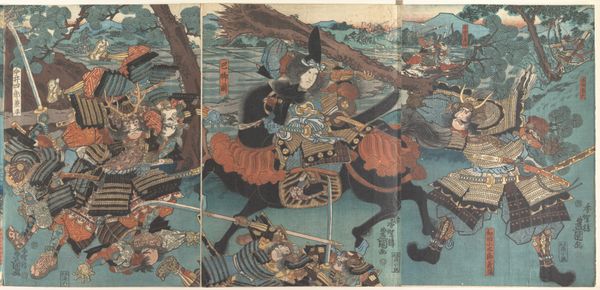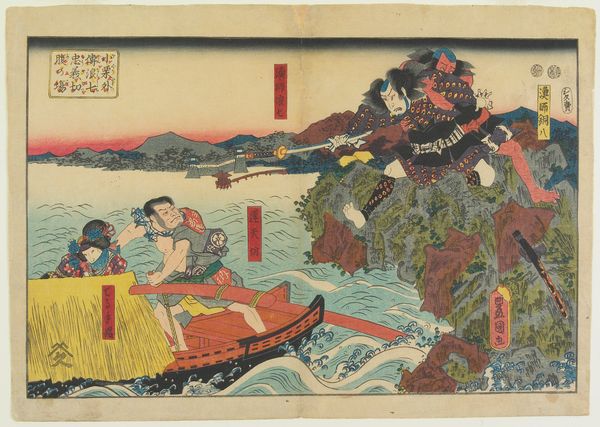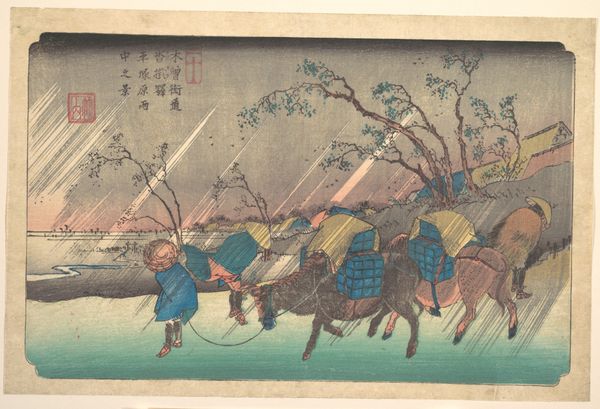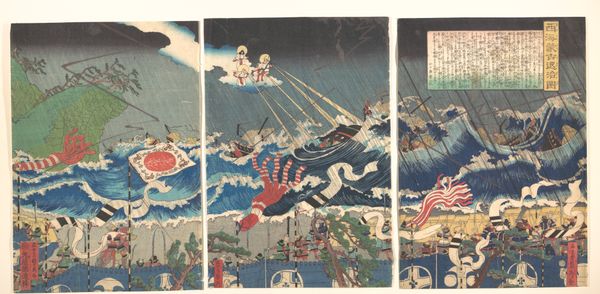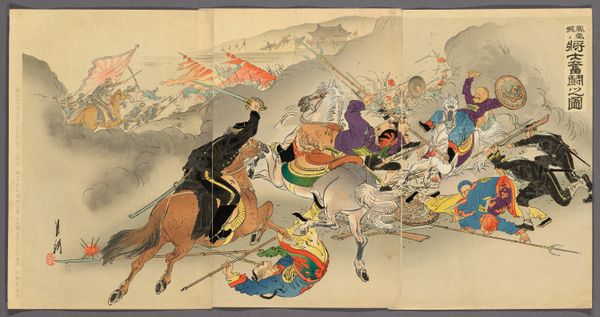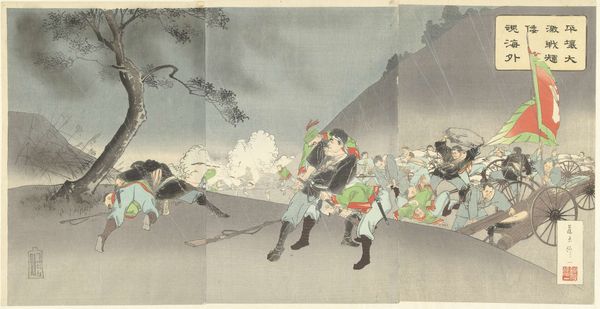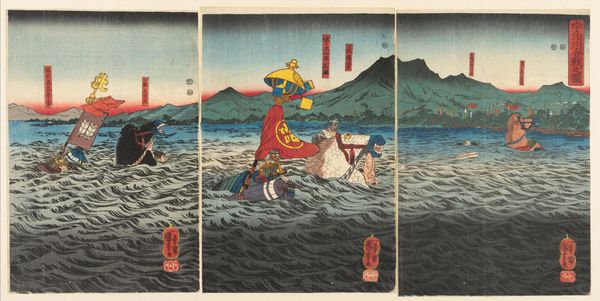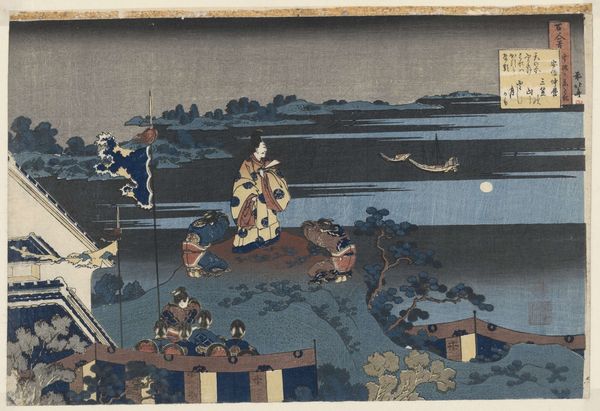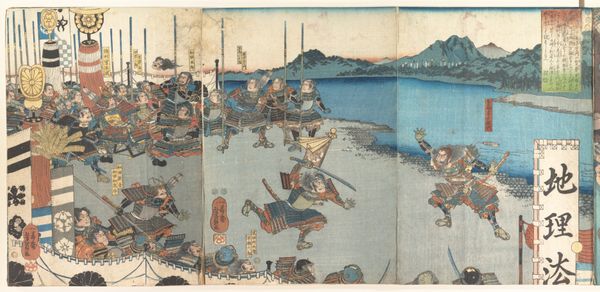
Fierce Fighting at Anseong Crossing in Korea (Chosen Anjo watashi no gekisen no zu) 1894
0:00
0:00
Copyright: Public Domain
Curator: Okay, let’s talk about this striking triptych. This woodblock print from 1894 is by Utagawa Kokunimasa, entitled "Fierce Fighting at Anseong Crossing in Korea." The print commemorates a battle in the First Sino-Japanese War. What’s your immediate impression? Editor: Chaos. Beautiful chaos! All these tiny figures thrashing through water under a luminous full moon. It feels almost dreamlike, if it weren’t for the… you know, the fighting. The composition is wild; the way Kokunimasa organizes this many figures into distinct groups creates depth. Curator: Absolutely, the materiality of ukiyo-e is key here. Think about the process – the carving of separate blocks for each color, the registration, the sheer labor. Mass production of such complex images speaks to the broad consumption of war narratives at the time. Editor: War as… consumer product. That's bleak, isn't it? Still, looking closer, I am thinking about the human element, right? Notice the way the artist depicts figures caught mid-stride or mid-slash, giving them personality in such small spaces. Curator: It is important to remember who this image was intended to serve. It celebrates Japanese military prowess, showcasing an industrialized army against what are presumably less well-equipped opponents. Consider how prints like these served to manufacture consent and support the war effort through mass media. Editor: Of course, but it’s hard to divorce the aesthetic impact from the context. There is the artist wrestling with something profound – even celebratory battle scenes echo something sorrowful and disorienting. This water, for instance, that washes over the field, blurs boundaries; It is lovely, isn't it? Curator: Right, but I am thinking of the water also quite practically. Its printing would've required nuanced carving to get that sense of depth and motion. Think about the specific tools and the labor, and the potential market that will see that craftsmanship and celebrate its detail. Editor: So, in our different ways, we see the impact, the artistry, and what it really represents, and we understand it better as a result of talking. This has made the artwork much deeper, as all art can be. Curator: Indeed, understanding art involves considering its creation, its consumption, and its lasting effects. A work that reminds us that artistic endeavors always reflect social processes.
Comments
No comments
Be the first to comment and join the conversation on the ultimate creative platform.
